Intel Pentium G850 Sandy Bridge 2.9GHz CPU Review
SiSoftware Sandra 2011 SP3
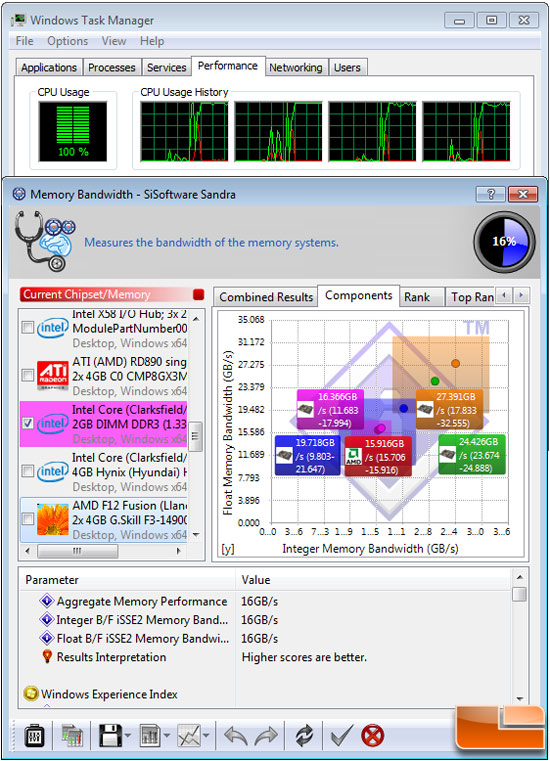
The Sisoft Sandra 2011 SP3 benchmark utility just came out a few weeks
ago and we have started to include it in our benchmarking. Sandra 2011 comes with
support for Virtualisation (Virtual PC/Server, Hyper-V, VMware) and
GPGPU (OpenCL, DirectX 11 DirectCompute), but today we will be using the
program to look at memory and CPU performance!
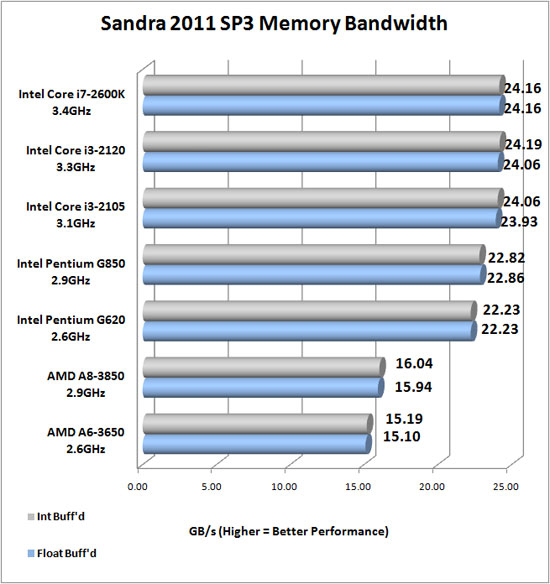
Results: All of test systems used the identical G.Skill Ripjaws X Series 8GB (2 x 4GB) memory kit that ran at 1866MHz with 9-10-9-28 1T timings. While the memory kit and settings were identical the memory performance was very different as you can see from the chart above. The Intel Pentium Processor G850 was found to have roughly 22.8 GB/s of memory bandwidth with 1866MHz CL9 memory. This is slightly slower than the other Intel Core iX ‘Sandy Bridge’ processors, but was slightly better than the Intel Pentium G620 that is 300MHz slower.
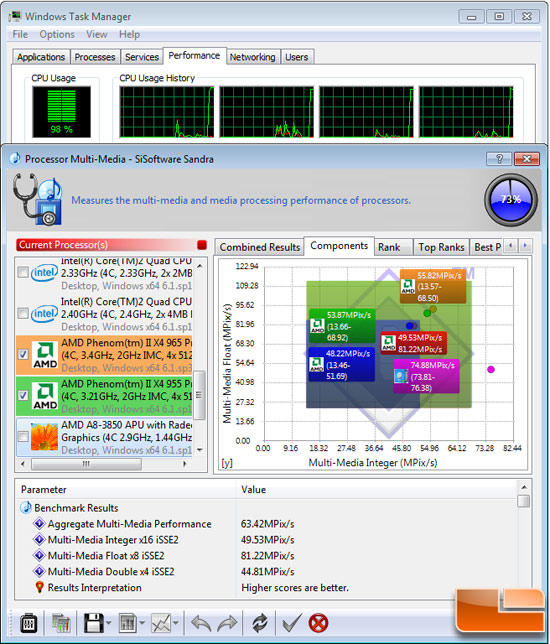
The Sandra Processor Multi-Media benchmark has been a long time
favorite of ours to look at floating point performance on processors.
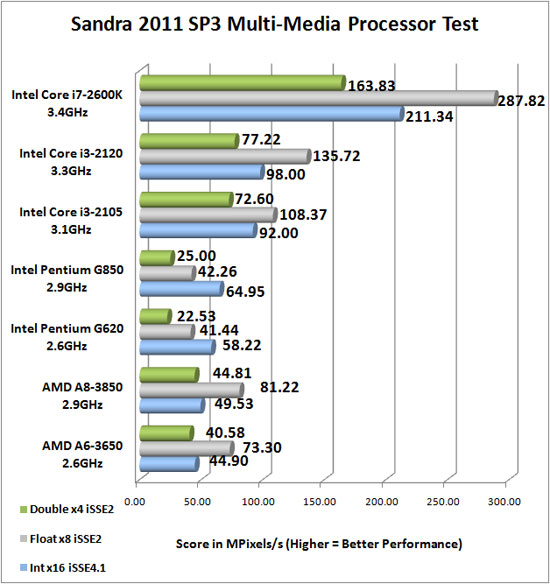
Results:
The Intel Pentium G850 had a respectable score in the Int x16 iSSE4.1 test, but performance really fell apart in the iSSE2 tests.
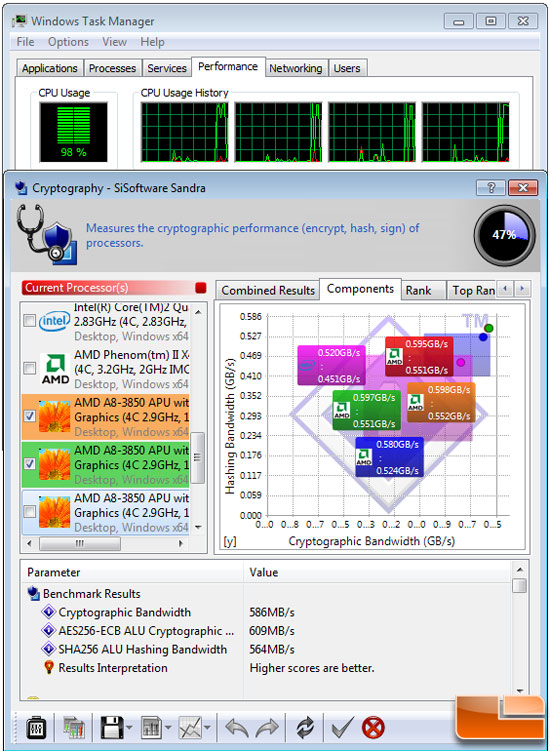
Cryptography has become an important part of our digital life: it
allows us to conduct safe transactions online, certify programs and
services, keep our data secure and much more. Sandra 2010c has a
dedicated benchmark built-in that measures cryptographic performance,
which is important on the new Intel 32nm processors like the Core i7
980X. It includes features like AES-NI!
Intel AES-NI is a new set of Single Instruction Multiple Data (SIMD)
instructions that are going to be introduced in the next generation of
Intel processors, as of 2009. These instructions enable fast and secure
data encryption and decryption, using the Advanced Encryption Standard
(AES), defined by FIPS Publication number 197. The architecture
introduces six instructions that offer full hardware support for AES.
Four of them support high performance data encryption and decryption,
and the other two instructions support the AES key expansion procedure.
Let’s take a look at how this feature impacts Cryptography performance.
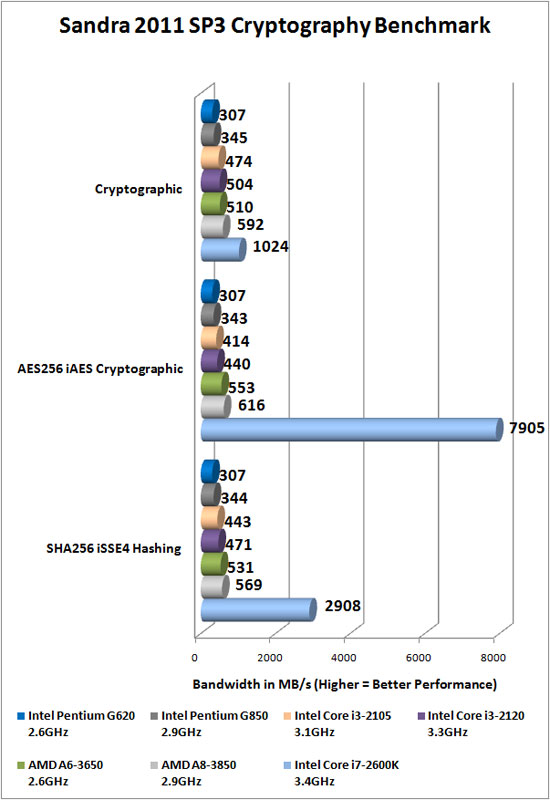
Results: The only processor tested that has AES-NI instructions that we benchmarked was the Intel Core i7-2600K and it dominated the test. The Intel Pentium G850 did fairly well for a dual-core processor and was found to be 12% faster than the Intel Pentium G620.

Comments are closed.